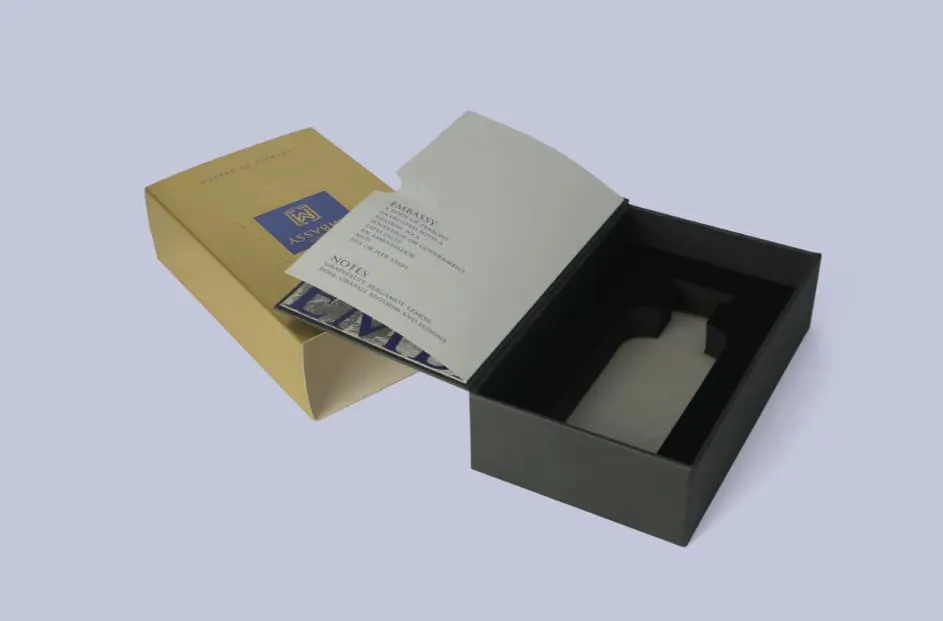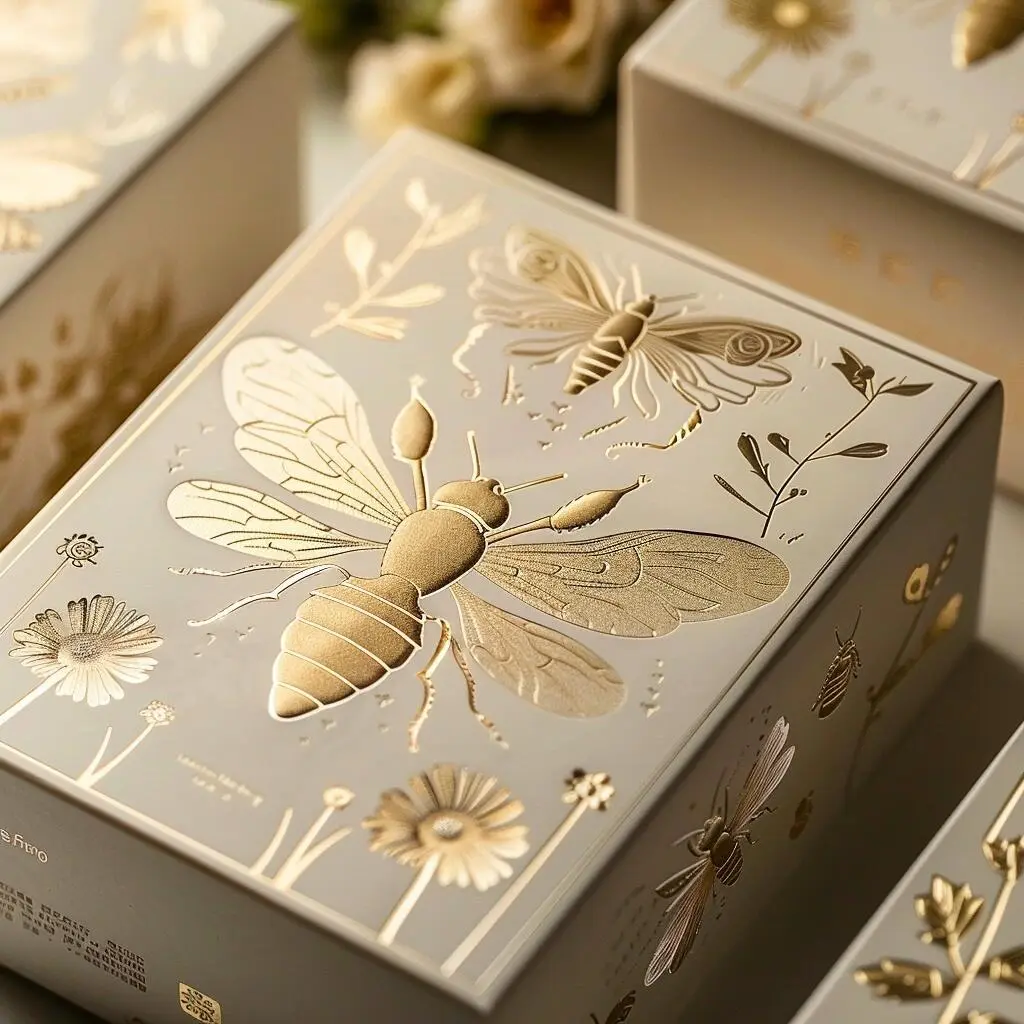8 Design Ideas for Eye-Catching Book Style Rigid Boxes
Discover 8 innovative design ideas for eye-catching book style rigid boxes that will elevate your packaging and captivate your audience.
Start Customizing
Table of content
Not all packaging is created equal. Some boxes do more than just carry a product—they tell a story, create a moment, and leave a lasting impression. The custom rigid book style rigid box with ribbon closure is a perfect example. With its sturdy structure and elegant book-like opening, it blends function with beauty in a way few other packaging formats can. It feels special the moment it’s touched, setting the tone before the product is even revealed. No wonder it’s become a favorite across industries—from cosmetics to chocolates, tech gadgets to luxury accessories. Whether you’re designing for a premium brand or crafting a memorable unboxing experience, a well-thought-out rigid box can make all the difference. Let's dive into eight proven design ideas that take these boxes from ordinary to unforgettable.
Color Is the First Conversation
Color isn’t just decoration—it’s emotion, memory, and identity wrapped into one. The moment someone sees a package, color speaks first. With a book style rigid box, the large flat panels offer an ideal surface to make that first impression count.
Real-World Example: Emerald and Gold That Turned Heads
When I worked on a packaging design for a limited-edition beauty set, we took a risk with deep emerald green and matte gold patterns. The result? Customers were picking it up just to admire it before they even looked at the product. That’s the kind of reaction strong visual contrast can create.
Tips for Color Pairing by Brand Style
Want sophistication? Go for jewel tones like sapphire blue or burgundy, paired with gold foil. For playful brands, try peach and aqua with hand-drawn doodles or abstract shapes. Geometric patterns, brushstroke effects, or even animal prints—used with intention—can define how your product is perceived.
Trends vs. Authenticity
Design trends show that bolder, unexpected color pairings are making waves. But it all comes down to authenticity. Make sure your color and pattern choices reflect your brand values, not just what’s trendy.

The Silent Power of Texture
The moment someone picks up a book style rigid box, their perception of the product shifts—often without even realizing it. Texture has that kind of quiet power. It sends a message before a word is read or a logo is seen. Whether it's the soft grip of a matte laminate or the refined roughness of a linen wrap, touch creates an emotional response that visuals alone can’t achieve. In one project I worked on for a premium watch brand, we used a velvety suede-like laminate, and the feedback was immediate: “It just feels expensive.” That single detail turned an ordinary unboxing into a sensory experience.
Exploring Textural Possibilities
Today’s packaging offers a wide range of textures—fabric laminates, leather finishes, natural papers, even metal or wood accents. One of the most versatile and effective choices is textured paper wraps. They’re subtle yet instantly elevate the box's feel. A linen texture, for example, gives off a sense of elegance and tradition. A crosshatch or pebble grain texture leans modern and bold. These materials not only feel good in the hand, but they also signal craftsmanship and care. And when paired with embossing or metallic foil, they become even more impactful.
Texture as Connection, Not Just Decoration
In the world of premium packaging, texture is rarely just about decoration—it’s about creating connection. The right surface can make someone pause, notice, and remember. That’s the kind of design detail that turns customers into loyal fans.
Packaging as a Storytelling Canvas
A brand that tells a good story is a brand people remember. And when that story is told visually, right on the packaging, it stays with the customer even longer. A book style rigid box gives you a wide, uninterrupted surface to work with—perfect for expressive custom illustrations.
A Personal Touch Through Illustration
One of the most meaningful projects I worked on involved hand-drawn botanical illustrations on a skincare box. The art depicted the exact plants used in the formulas. It wasn’t just beautiful—it felt personal, honest, and rooted in something real.
Choosing the Right Illustration Style
Illustration styles can range from minimalist line art to detailed watercolors to abstract bursts of color. The key is finding a visual language that aligns with your message.
Don’t be afraid to be different. Your box doesn’t have to look like anyone else’s. In fact, it shouldn’t.
Subtle shine, texture, and detail often speak louder than loud prints. Foil stamping and embossing are two time-tested techniques that can instantly elevate a book style rigid box. They catch the light. They catch the touch. And they show that you’ve paid attention to the little things.
Gold foil is a classic choice, but silver, rose gold, copper—even holographic—can add personality. Raised embossing can turn a simple logo into a tactile focal point, while debossing offers a more understated luxury.A tip from experience: foil works best when it’s used sparingly and intentionally. Highlight a logo, a tagline, or a pattern border. Let it stand out, not scream. The beauty of these techniques lies in their restraint.
Clients often tell me their customers "feel the quality" even before opening the box. That’s the impact of smart detailing.

Unboxing as an Experience
There’s a certain magic in opening a well-designed book style rigid box. It’s not just about what’s inside—it’s about the experience of getting there. And the closure you choose plays a huge role in that.
Closure Options That Speak Volumes
Magnetic closures are a go-to for premium products. They feel sleek and secure. But there’s room to explore. A ribbon-tied closure creates a sense of gift-giving and care. Clasps or buttons can offer a vintage twist, perfect for heirloom-style products.
Designing Ritual into the Reveal
I once designed a multi-layered box for a tea brand, where each section opened like a page revealing a new flavor. Customers loved it—it turned a simple act into a ritual.You can even embed surprise elements: drawers, hidden compartments, fold-out panels. These functional choices also build emotion. People are more likely to share packaging that surprises and delights them.
Packaging That Tells a Story
Great packaging doesn’t just hold a product—it tells a story. A well-thought-out theme can transform a book style rigid box into something emotionally resonant. And customers notice when every design detail aligns with a bigger narrative.
Beyond Holidays: Finding Your Unique Theme
Holiday-themed boxes, for instance, allow for playful graphics, cozy colors, and festive embellishments. But it goes deeper than seasonal. Maybe your box celebrates your brand’s anniversary, a collaboration, or a location.
Case Study: A Paris-Inspired Chocolate Box
I helped a chocolate brand design a Paris-themed box complete with hand-drawn maps, café illustrations, and French-script typography. It wasn't just packaging—it was a tiny trip to Paris.When brainstorming themes, start with your brand’s voice. Are you romantic? Futuristic? Earthy? Let that guide your concept and carry it through the artwork, fonts, inserts, and finish.Strong themes make customers feel like they’re part of something bigger. That’s loyalty built through design.
Don’t Neglect the Inside
What’s inside matters just as much as the cover. Too often, we pour all our design energy into the exterior and forget that the interior of a book style rigid box is prime real estate for storytelling, branding, and surprise.
Simple Details That Make a Difference
Adding a message under the lid—something simple like “You’re going to love this”—can make someone smile. Including a printed illustration, a mini thank-you card, or custom-fit inserts that cradle the product elevate the whole experience.
A Memorable Moment with Meaning
One of my favorite design moments was inserting a tiny envelope inside a packaging box for a wellness product. It held a personalized mantra card. Customers kept them in their wallets. Small, but unforgettable.
Creative Layers That Invite Discovery
Branded tissue paper, hidden compartments, or scented paper—these finishing touches turn your box into something customers want to revisit. And if your project calls for a bit more creativity, you can even take cues from custom rigid Cylindrical Boxes to add surprise through shape contrast or internal layering.

Purposeful Simplicity
Minimalism isn’t about doing less—it’s about doing what matters, better. In packaging, it’s a way to let confidence and clarity speak louder than clutter.A book style rigid box with clean lines, a single logo, and plenty of negative space exudes self-assurance. It says, “We know who we are. We don’t need bells and whistles to impress you.”
The Power of Quiet Details
One project I still think about involved a plain white box with only the brand name embossed in blind relief—no ink, no foil. It was so quiet, it demanded attention. That’s the power of restraint.
Precision Over Ornamentation
Minimalist design works especially well for high-end products, sustainable brands, and tech items. But it’s not about being plain—it’s about being precise. The font, spacing, material, and structure all need to work together flawlessly.When done right, minimalism is bold, beautiful, and unforgettable.
Conclusion: Elevating Your Brand with Thoughtful Book Style Box Design
A thoughtfully designed book style rigid box does more than hold a product—it tells a story, builds anticipation, and leaves a lasting impression. Whether through color, texture, illustration, or structure, the right design turns your packaging into a true brand experience.
In a market where customers are overwhelmed with options, details matter. How your box feels, opens, and surprises can shape how your brand is remembered. So the next time you’re developing packaging, don’t just ask what looks good. Ask what tells your story, connects with your audience, and earns a spot on their shelf—not the trash.
Now’s the time to push boundaries. Let your next box be more than a box. Let it be the first chapter in your brand’s next success story.
Recommended for you



.avif)
.avif)
.avif)
.avif)
.avif)
.avif)






.avif)
.avif)
.avif)
.avif)
.avif)
.avif)










